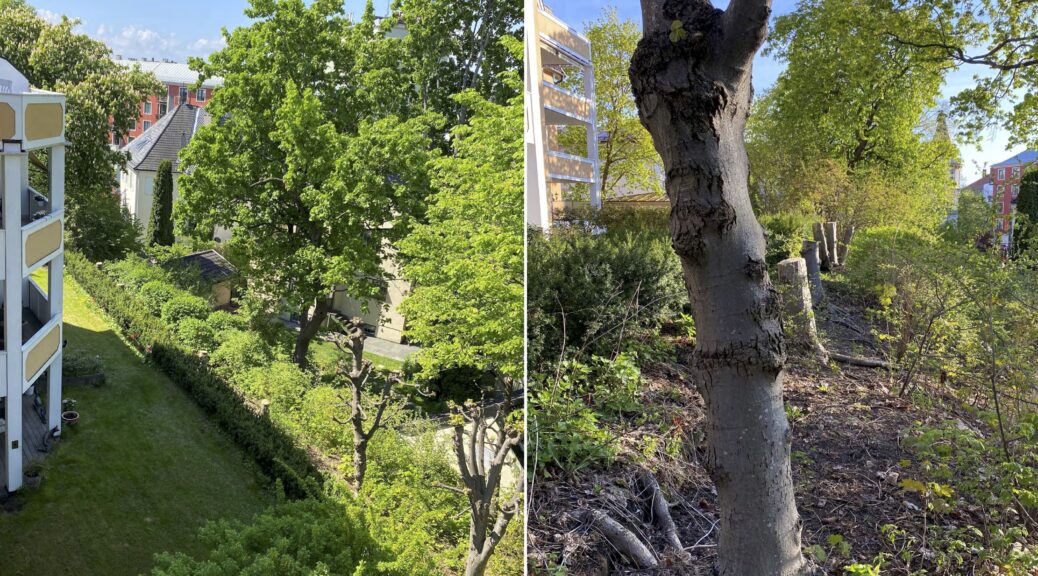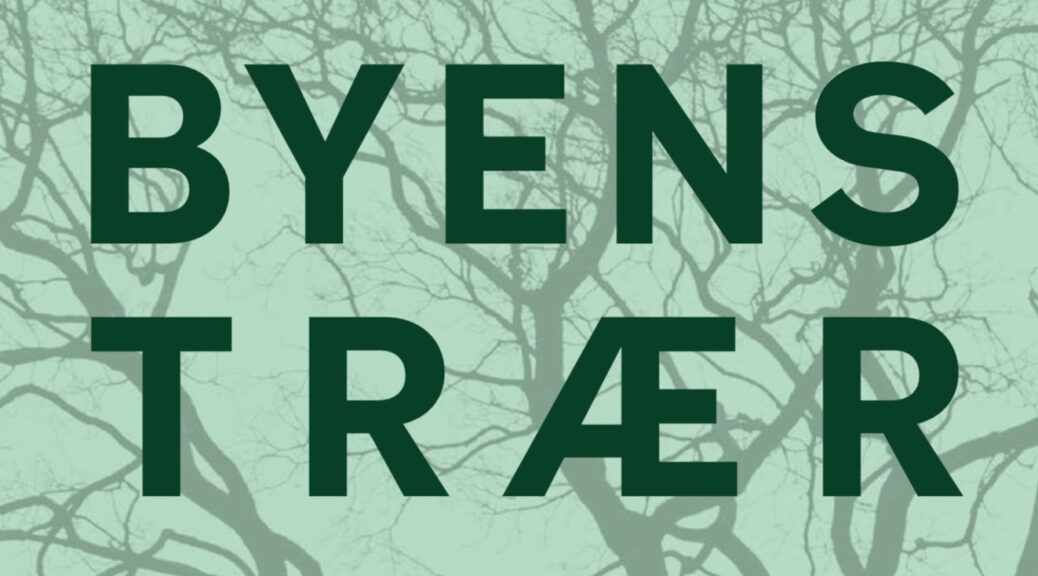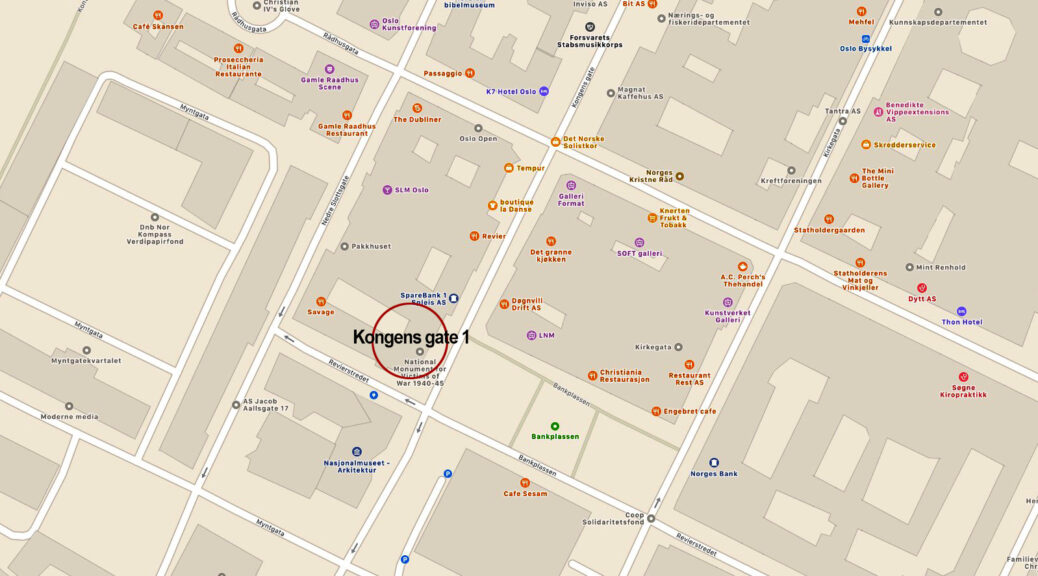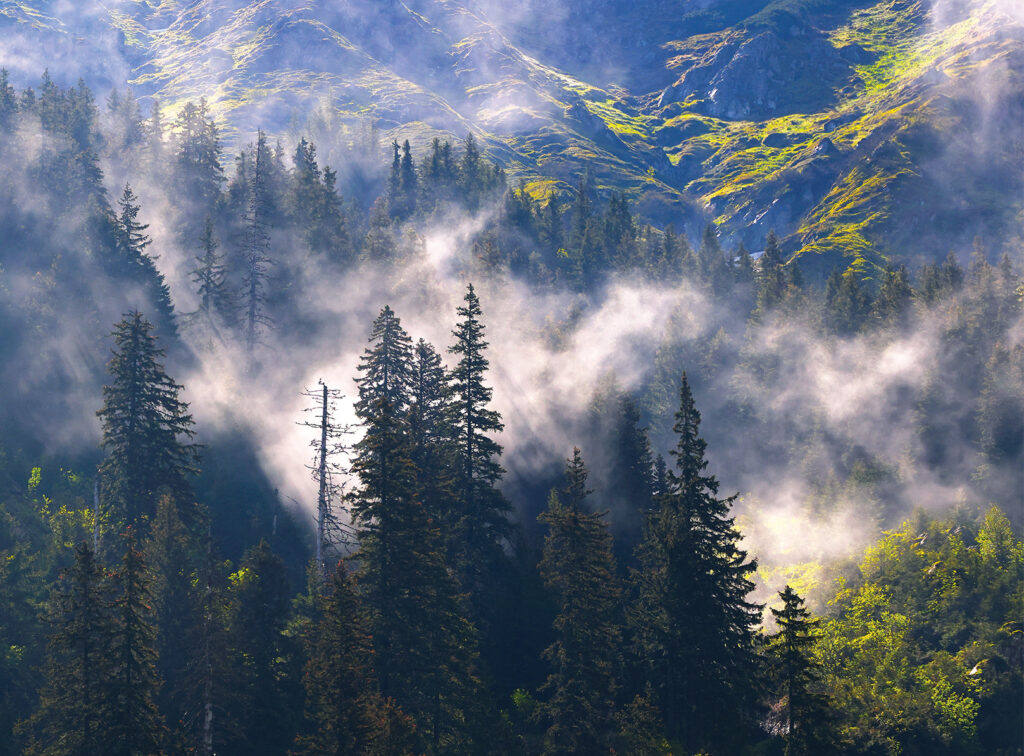Treets Venner har en gledelig pris: Årets TreVenn, og den mindre hyggelige Årets Tredreper. Disse prisene «deler vi ut» for å sette søkelyset på svært god innsats for å bevare store trær – tilsvarende er det noen dårlige eksempler som vi kan ta lærdom fra. Fra begrunnelsen for utdeling av Tredreperprisen for 2022 referer vi fra Styrets begrunnelse for å tildele prisen til styret i sameiet Nordraaks gate 4–6 i Oslo.
Begrunnelsen for tildelingen er todelt:
- Ødeleggende beskjæring
- Slett saksbehandling
Ødeleggende beskjæring
Fem friske lindetrær, med en antatt alder på 45 år er kappet i en høyde på 1-2 meter. Styret hevder at de ikke har felt trærne, men «beskåret» dem. Fagfolk som Treets venner har kontaktet er temmelig samstemte om at denne beskjæringen er utført på en måte som tar livet av trærne, eller så skyter de skudd og blir til et «kosteskaft». Disse trærne kommer aldri til å bli «trær» igjen.
Treets venner har forståelser for at personer som bor nederst i en boligblokk får lite lys på balkong og i leiligheten, dersom det vokser store trær tett på blokka. Da kan det muligens hjelpe med en fortynning, men det må vurderes i hvert enkelt tilfelle.
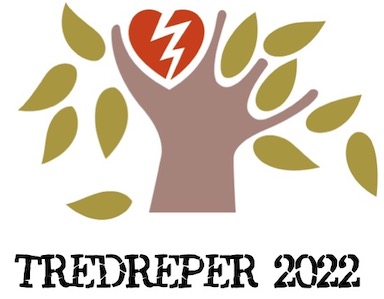
Slett saksbehandling
Trær i et sameie står oftest på fellesareal og er sameiets felleseie. Styret har rett og plikt til å sørge for vedlikehold av vegetasjon og grøntarealer. Trær som er skadet og som kan utgjøre en umiddelbar trussel for helse og liv har også styret plikt til å ta tak i.
Felling av trær, eller kraftig beskjæring av trær, må behandles på ordinær eller ekstraordinær generalforsamling/årsmøte. Da må det legges fram en innstilling som vurderer argumenter for og imot felling eller beskjæring. Avgjørelser fattes som regel med vanlig flertall, med mindre det er snakk om særlig gamle og majestetiske trær. I slike tilfeller kan det argumenteres for at det må 2/3 flertall til for å felle et tre (eierseksjonslovens § 49, der det kreves 2/3 flertall i slike saker). Naturmangfoldlovens prinsipper om utvalgte naturtyper kan også være en rettesnor. I mange tilfeller er det også reguleringsbestemmelser som sier noe om vegetasjon og trær.
I dette tilfellet omfattes tomten av reguleringsplan S-2529 fra 1981. I § 8 står det følgende: «Ved utarbeidelse av bebyggelsesplan bør den verdifulleste del av vegetasjonen søkes bevart og innpasses i den nye bebyggelse. Dette gjelder spesielt trær langs gater og i særlig grad i området mot Kirkeveien».
Det har ikke vært vanlig tidligere at reguleringsbestemmelsene omfatter annet enn hva som skjer ved bygging. Dette har blitt endret i Småhusplanen, fordi man så at utbyggere tok seg til rette og felte alle trær før de søkte om byggetillatelse. Derfor er alle trær over en viss størrelse «fredet» i Småhusplanens område. Men selv om bestemmelsen i § 8 gjelder for nybygging, er det åpenbart at kommunen signaliserer at noe av vegetasjonen innen planområdet er veldig verdifull2.
«Området mot Kirkeveien» gjelder især for den aktuelle tomten. Det er meningsløst å ta vare på trær i en byggeperiode, hvis man likevel feller trærne noen år etterpå. I tillegg forelå det et årsmøtevedtak fra 2011 om at hugging av trær skal behandles av årsmøtet. Trærne har tydeligvis vært et tema gjennom en årrekke, og problemer med lysforholdene er blitt løst ved pen beskjæring hvert år.
Sameiestyrer har et stort ansvar i å forvalte regelverk, respektere årsmøtevedtak og balansere hensynet til ulike interesser i et sameie. Vi ser dessverre stadig vekk at sameiestyrer misbruker sin makt til å foreta handlinger som i denne konkrete saken.

